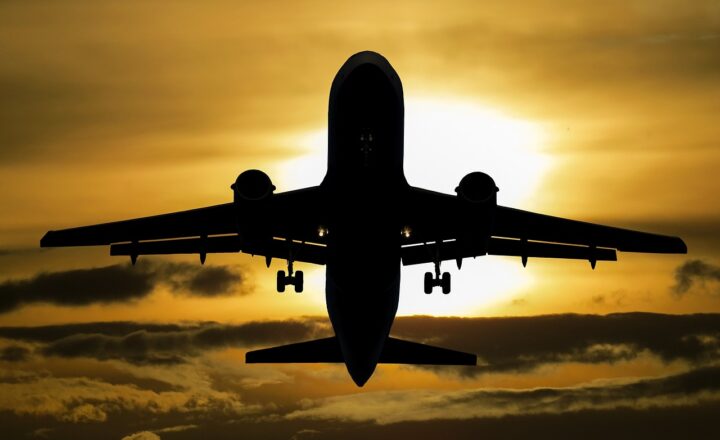
As the world faces the challenges of climate change and increasing carbon emissions, the aviation industry is seeking innovative solutions to reduce its ecological footprint. Traditional jet fuel has been the primary source of energy for aircraft, leading to significant greenhouse gas emissions, which contribute to global warming. However, new advancements in technology are steering the aviation industry towards a greener future—one where electric and hybrid aircraft play an essential role in sustainable travel.
1. The Need for Sustainable Aviation
The aviation sector has long been criticized for its environmental impact. According to the International Air Transport Association (IATA), aviation accounts for approximately 2-3% of global carbon dioxide emissions. With air travel expected to double in the next 20 years, it is crucial to adopt sustainable practices now to mitigate the industry’s effects on the planet.
The urgency for change is underscored by global accords like the Paris Agreement, which aims to limit the increase in global temperatures. As pressure mounts from governments, environmental groups, and the general public, airlines are committed to reducing emissions, making room for electric aviation as a viable alternative.
2. Understanding Electric Aviation
Electric aviation encompasses a variety of aircraft powered either entirely or partially by electricity. The technology is still in its infancy but has significant potential for transformation.
There are two primary types of electric aircraft:
- Fully Electric Aircraft: These aircraft rely entirely on electric batteries to power engines. While they currently have limitations in range and capacity, innovations in battery technology are promising.
- Hybrid Electric Aircraft: Combining traditional jet engines with electric propulsion systems, hybrid models offer improved fuel efficiency and reduced emissions while retaining the capabilities of conventional aircraft.
Electric aviation technology is being explored by various companies and institutions, pushing the boundaries of design, efficiency, and sustainability.
3. Key Players in Electric Aviation
Several companies are leading the charge towards electric aviation. These innovators are developing new aircraft, supporting technology, and infrastructure to make electric flight a reality:
- Boeing: Boeing has invested in electric aviation startups and is exploring hybrid technologies for potential future aircraft models.
- Airbus: Airbus is actively developing the E-Fan X, a hybrid-electric aircraft that showcases their commitment to sustainable aviation.
- Pipistrel: Specializing in light aircraft, Pipistrel has developed all-electric planes like the Alpha Electro, aimed at sustainable flight training programs.
- MagniX: This company focuses on electric propulsion systems. Their all-electric retrofitted Cessna 208 is a significant step toward commercial electric flight.
These companies are not only creating electric aircraft but also actively working on regulatory frameworks and public awareness to foster acceptance of electric aviation.
4. Technological Innovations Driving Electric Aviation
Advancements in several key technologies are shaping the future of electric aviation, including:
- Battery Technology: The heart of electric aviation, battery technology is improving rapidly. The development of high-capacity, lightweight batteries is critical for increasing the range and performance of electric aircraft.
- Electric Propulsion Systems: Innovations in electric motors offer enhanced efficiency and reliability, essential for safe and effective electric flight.
- Hybrid Systems: By combining electric and conventional power sources, hybrid systems can extend operational ranges while reducing emissions significantly.
- Autonomy and Automation: Autonomous and semi-autonomous flying systems promise improvements in flight safety and operational efficiency.
These innovations work together to create a path toward electric aviation’s viability and acceptance within the existing aviation ecosystem.
5. Benefits of Electric Aviation
Electric aviation comes with a range of advantages:
- Lower Operating Costs: Once established, electric aircraft can offer lower operating and maintenance costs compared to traditional fleets due to reduced fuel and maintenance expenditures.
- Reduced Noise Pollution: Electric aircraft are quieter, offering substantial benefits in urban areas and near airports where noise regulations are strict.
- Eco-Friendly Operations: The reduction in fossil fuel consumption leads to lower emissions and conveys a commitment to sustainability that resonates with environmentally-conscious travelers.
However, challenges such as limited range, charging infrastructure, and regulatory hurdles must be carefully navigated to turn these benefits into reality.
6. Challenges to Overcome
While electric aviation holds promise, several challenges must be addressed:
- Battery Limitations: Current battery technology poses significant limitations regarding energy density, impacting range and payload capacity.
- Infrastructure Needs: The development of charging infrastructure is critical for the widespread adoption of electric aircraft in commercial aviation.
- Regulatory Acceptance: Modifications to existing aviation regulations and safety frameworks will be necessary to accommodate electric and hybrid aircraft operations.
- Public Perception: Aviation sustainability remains a niche subject. Increasing public awareness and acceptance are vital for the industry to thrive.
Addressing these challenges requires collaboration among manufacturers, regulatory authorities, and educators to create awareness and develop feasible solutions.
7. The Road Ahead for Electric Aviation
Looking ahead, electric aviation promises to revolutionize the industry. Predictions suggest:
- Commercial Operations: By the 2030s, we may see electric regional flights become commonplace, supporting short-haul travel and connecting smaller airports.
- Research and Development Investment: Airlines and investors are pouring resources into the future of electric aviation, indicating sustained interest and commitment to sustainability innovations.
- Regulatory Support: Governments across the globe are likely to introduce policies and incentives promoting electric aircraft development as a component of their environmental strategies.
The trajectory of electric aviation will depend on successful collaboration, technological advancements, and a shared commitment to sustainability.
Conclusion
Electric aviation represents the future of flight. As technological innovations unfold and sustainability becomes a paramount concern for the aviation industry, electric and hybrid aircraft will pave the way towards a greener and more efficient aviation sector. Stakeholders must continue to innovate, collaborate, and address existing challenges to transform ideas into operational realities, ultimately reducing the environmental impact of air travel.
As we look forward to the skies of tomorrow, electric aviation is set to change how we think about travel, delivering safer, quieter, and cleaner flights for generations to come.








